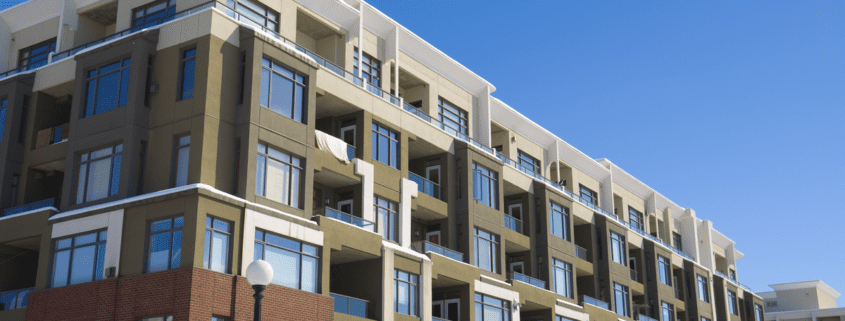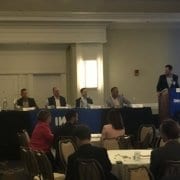Why The Student Loan Debt Crisis Is Driving Multifamily Demand Amongst Millennials
Today, we are in a “student loan debt crisis” with 45 million Americans – and counting – owing on their college loans. Nationwide, more than $1.5 trillion in student debt has accumulated, and it is now the second highest consumer debt category, preceded only by mortgage debt. Additionally, the average monthly student loan payment increased from $227 in 2005 to $393 in 2020. As this epidemic grows and the average monthly student loan payment continues to increase, the correlation between a recent college graduate’s total debt and their inability to purchase a home strengthens.
High levels of student debt are a leading factor in keeping young adults in multifamily housing longer than previous generations. Today, the average person rents for 6 years before buying a home. Additionally, 12.3% of Millennial renters plan to rent permanently, up from 10.7% in 2018. The National Association of Realtors recently found that about 25% of Millennial homebuyers reported saving for a down payment as the most difficult task in the home buying process. Additionally, 60% of homebuyers 35 years old and younger credited student loan debt as their biggest obstacle in saving for a down payment.
Read ahead to learn more ways that the burden of student loan debt is impacting the buying power of aspiring homeowners and how this challenge has contributed to higher levels of multifamily demand over the last decade.
Stagnant Wage Growth and Flexibility
Stagnant Wage Growth…
Despite increasing tuition rates and, hence, rising student loan amounts, wage growth throughout the U.S. has remained stagnant. Today, the average Millennial earns a little over $35,000 a year and has an average net worth of less than $8,000. Because of low, stagnant wages, 62% of Millennials are reportedly living paycheck to paycheck and less than half feel financially stable.
…Mandates a Need for Flexibility
Between staggering student loan debt, static wages, and high costs of living, many Millennials are struggling to make ends meet. And when the opportunity to relocate for a better paying job presents itself, apartment living makes it easier to uproot and move across the state or even across the country versus owning a home.
New Talent Migrating to Expensive Urban Areas
Recent college graduates are attracted to major cities like New York, San Francisco, and Washington, D.C. because of the abounding opportunities to find gainful employment. As the growing population of talent migrates to urban cities, large employers are also flocking to these areas in the pursuit of the perfect candidate. While this migration of talent is creating more opportunities for recent graduates, it also lessens their probability of homeownership. This is because the cost of living in these cities is substantially higher and individuals saddled with debt often cannot afford the astronomically priced housing. As a result, multifamily housing becomes the only viable option for housing – and unfortunately many become stuck in the cycle as urban home and rent prices increase.
Difficulties Qualifying for Mortgages
Student loan debt can have a major impact on Millennials’ credit scores. Defaulting on the loan or making late payments can drastically decrease the credit score and potentially cause difficulties qualifying for a mortgage loan both now and in the future. For some Millennials, this means that the possibility of homeownership will be delayed either temporarily or sometimes even permanently. According to a recent poll of nearly 2,500 U.S. adults, 58% of Millennials have reportedly been denied for at least one type of financial loan due to their credit score. Millennials who simply do not qualify for a mortgage still need a place to live. For those Millennials who are trying to stay afloat with student loan debt and other expenses, apartment living is usually the only option.
Minimalistic Lifestyles
Due to their economic dilemmas and shifting values, Millennials have a different perspective on “stuff” than older generations. This perspective has been molded from growing up in a recession, entering a struggling job market, and being forced to pay off large amounts of student loan debt. Along with not having extra income to purchase unnecessary items, being confined to apartment living has contributed to their more minimalistic lifestyle.
Because Millennials do not have or even desire a lot of materialistic things, they have less of a need for large, suburban homes with extra rooms and storage space. With the average one-bedroom apartment measuring approximately 757 sq. ft., the minimalistic lifestyle has been somewhat thrusted upon Millennials who want to live clutter-free. And for those who cannot afford additional items, this type of lifestyle makes the most sense.
The nation’s total amount of student loan debt has reached astronomical levels in the U.S. due to rising tuition costs and lower entry-level salaries. And the trajectory of this debt is only expected to grow much larger in the future. As this debt builds, the Millennial generation is the one that is most heavily impacted – resulting in significant changes in where and how they live and in turn driving more demand for multifamily housing.
Read Multifamily for Millennials: Top Trends in Amenities & Services to learn more about Millennials and Multifamily Housing.











